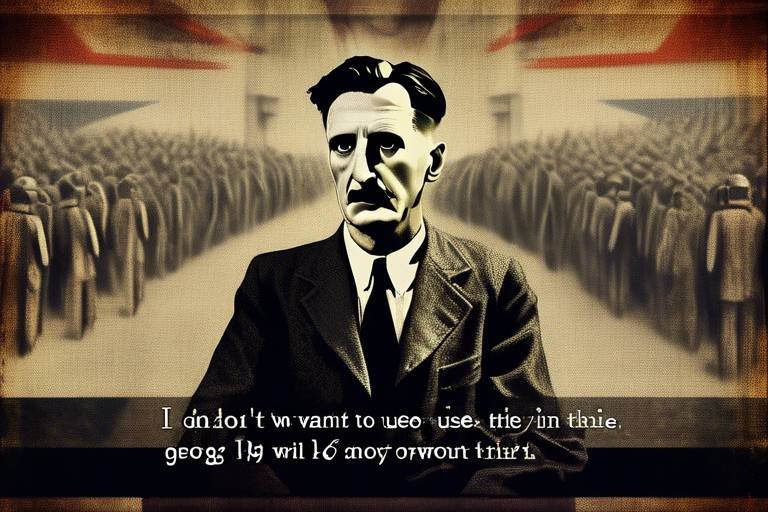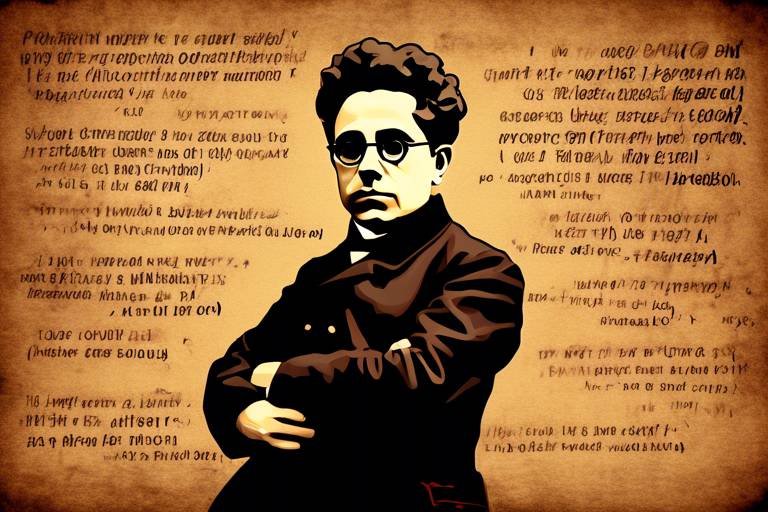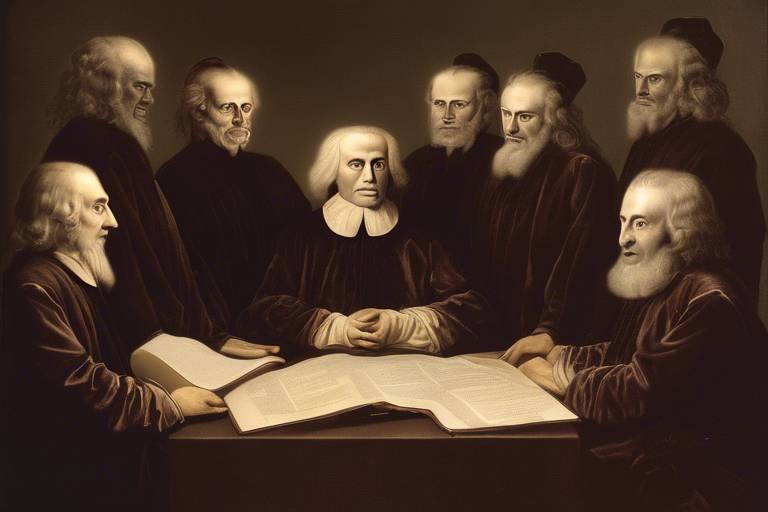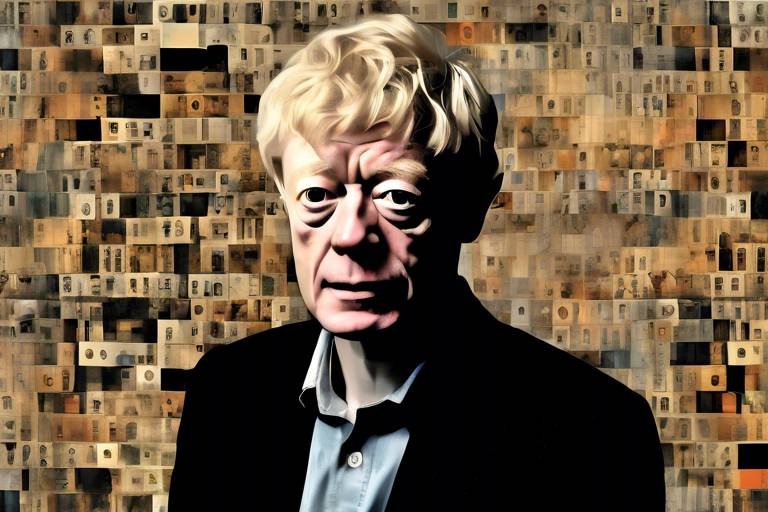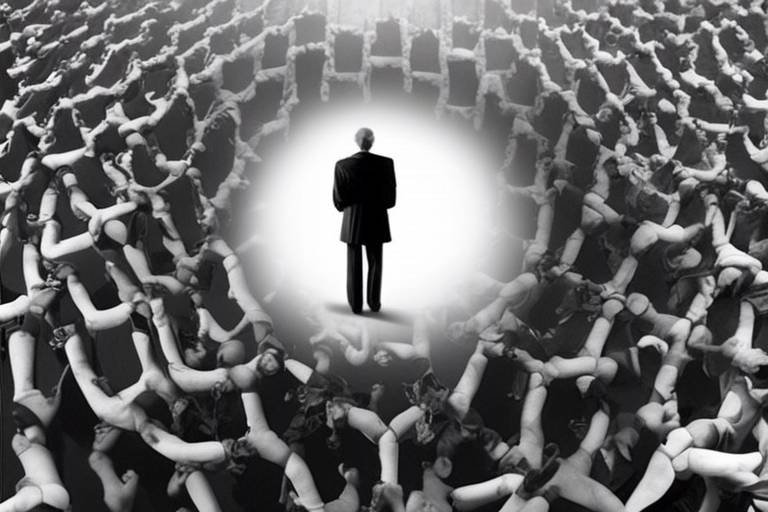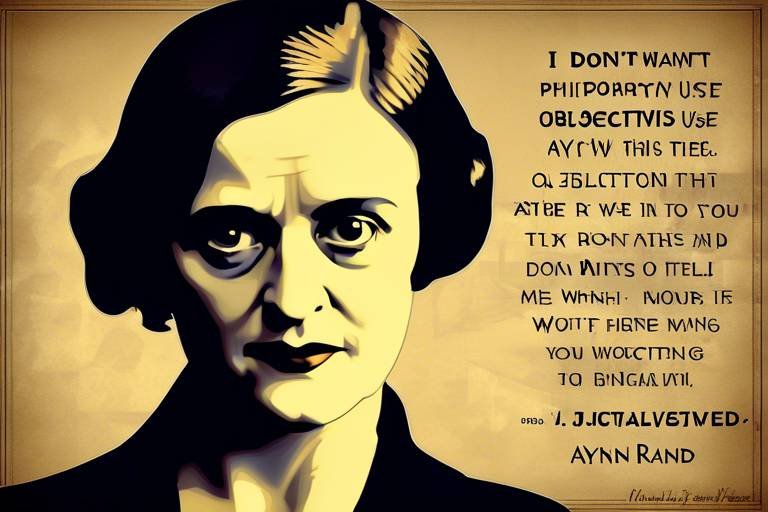The Thoughts of Jean Baudrillard on Simulacra and Simulation
Jean Baudrillard, a profound philosopher and sociologist, challenged our understanding of reality through his groundbreaking theories on simulacra and simulation. His ideas resonate deeply in today’s world, where the lines between the real and the artificial are increasingly blurred. Baudrillard's work prompts us to question: what does it mean to live in a world where representations can overshadow reality? In this exploration, we will delve into his theories, examining their implications on our perception of truth and how they shape contemporary culture.
At the core of Baudrillard's thought is the idea that modern society is saturated with signs and symbols that no longer refer to any original reality. Instead, these signs create a new kind of reality—one that is constructed through media, advertising, and technology. This phenomenon leads us to a state of hyperreality, where the distinction between the real and the simulated becomes indistinguishable. Baudrillard's insights are not merely academic; they challenge us to reconsider our everyday experiences and the ways we interact with the world around us.
As we navigate through this article, we will unpack Baudrillard's definitions of simulacra and simulation, explore the four stages of simulacra, and analyze the role of media in shaping our perceptions. By the end, we hope to illuminate how Baudrillard's theories continue to influence our understanding of identity, culture, and truth in the modern world.
Simulacra are more than just copies; they are representations of things that have lost their original reference. Baudrillard defines simulacra as entities that exist in a world where the concept of the original has become irrelevant. In contemporary culture, we are inundated with images and experiences that are designed to replicate reality but often fall short of authenticity. This raises an important question: how do we differentiate between what is real and what is merely a representation?
In Baudrillard's view, simulacra play a crucial role in shaping our understanding of the world. They permeate various aspects of life, from consumer culture to media representations. For instance, think about how advertisements often create an idealized version of products that may not reflect their actual utility. This disconnect between representation and reality is what Baudrillard refers to as a simulacrum.
Simulation is the process through which reality is imitated or reproduced. Baudrillard distinguishes between simulation and reality by emphasizing that simulation does not merely reflect reality; it creates a new reality altogether. This transformation can be likened to a funhouse mirror—the reflection may look similar, but it distorts the truth in ways that can be unsettling. As we become more immersed in simulated experiences, our perceptions of what is genuine begin to shift.
Baudrillard outlines four distinct stages of simulacra, each representing a different relationship between reality and representation. Understanding these stages is essential for comprehending the evolution of simulacra in contemporary culture:
| Stage | Description |
|---|---|
| First Stage: Reflection | This stage involves a faithful representation of reality, where images and signs accurately depict what they represent. |
| Second Stage: Perversion | In this stage, representations distort reality, leading to a misinterpretation of what is true. |
| Third Stage: Pretension | Here, representations mask the absence of reality, creating a façade that suggests authenticity. |
| Fourth Stage: Pure Simulation | In this final stage, simulacra bear no relation to any reality; they exist purely as constructs. |
The first stage of simulacra is characterized by a faithful representation of reality. In this phase, images and signs closely mirror the objects or concepts they depict. Think of photographs or paintings that capture the essence of a scene or subject. This stage sets the foundation for understanding how representations evolve over time and how they can influence our perceptions.
As we move into the second stage, the relationship between representation and reality becomes more complex. Here, the representation distorts reality, leading to a skewed perception. This distortion can be seen in various societal beliefs, where the portrayal of certain ideas or lifestyles in media can create unrealistic expectations. For example, social media often presents curated lives that seem unattainable, affecting our self-image and aspirations.
Media plays a crucial role in shaping our understanding of reality. Baudrillard critiques the media's influence on the proliferation of simulacra and simulation, arguing that it creates a hyperreal environment where the distinction between reality and representation is blurred. The constant exposure to media images and narratives can lead us to accept these representations as reality, shaping our beliefs, values, and behaviors.
Hyperreality is a condition where the distinction between reality and simulation blurs, resulting in a new form of reality that is more real than reality itself. In contemporary society, hyperreality manifests in various ways, from theme parks that recreate historical events to virtual reality experiences that immerse us in simulated worlds. Baudrillard's concept of hyperreality challenges us to consider how these experiences affect our understanding of truth and authenticity.
Real-life instances of hyperreality illustrate Baudrillard's theories. Some notable examples include:
- Advertising: Many advertisements create idealized versions of products, leading consumers to believe they are purchasing an experience rather than a tangible item.
- Theme Parks: Places like Disneyland offer a meticulously crafted version of reality, where visitors engage in experiences that are designed to be more enjoyable than real life.
- Digital Media: Social media platforms often present curated versions of people's lives, leading to a hyperreal perception of social interactions and relationships.
Baudrillard's thoughts on simulacra and simulation have profound implications for society. They challenge us to reconsider our identities and cultural norms in an age where truth is often obscured. As we navigate a world filled with representations, understanding Baudrillard's theories can help us critically assess the information we consume and the realities we inhabit. In a way, his work serves as a mirror, reflecting the complexities of our existence in a hyperreal world.
- What are simulacra? Simulacra are representations or copies of things that no longer have an original reference point.
- How does Baudrillard define hyperreality? Hyperreality is a condition where the distinction between reality and simulation is blurred, creating a new form of reality.
- What are the four stages of simulacra? The four stages are reflection, perversion, pretension, and pure simulation, each representing a different relationship between reality and representation.
- What role does media play in simulation? Media shapes our understanding of reality by proliferating simulacra, leading to a hyperreal environment where representations are often accepted as reality.

Understanding Simulacra
Simulacra, a term popularized by the French philosopher Jean Baudrillard, represent a fascinating concept in the study of culture and media. At its core, simulacra are copies or representations of things that no longer have an original. Imagine walking through a museum filled with replicas of famous artworks. Each piece is a simulacrum, an imitation that, while visually striking, lacks the authenticity of the original. This phenomenon is crucial for understanding the complexities of modern culture, where our perceptions are increasingly shaped by these representations rather than by direct experiences.
To grasp the significance of simulacra, it's essential to recognize how they permeate our daily lives. From the advertisements we encounter to the digital avatars we create, simulacra are everywhere. They serve as a lens through which we view reality, often distorting our understanding of what is genuine. Baudrillard argues that in a world saturated with simulacra, we risk losing sight of the original, leading to a cultural landscape where the distinction between reality and representation becomes increasingly blurred.
Consider the following examples of simulacra in contemporary society:
- Reality TV Shows: These programs often present exaggerated or scripted versions of reality, creating a perception that is more entertaining than authentic.
- Social Media Filters: Platforms like Instagram and Snapchat allow users to enhance their images, presenting a curated version of their lives that may not reflect reality.
- Theme Parks: Places like Disneyland create immersive experiences that simulate reality, transporting visitors to fantastical worlds that, while enjoyable, are entirely constructed.
Baudrillard's exploration of simulacra invites us to question our surroundings. Are we engaging with the world directly, or are we merely interacting with representations? This inquiry leads to a deeper understanding of our cultural landscape, where the lines between reality and simulation are increasingly indistinct.
In essence, understanding simulacra is not just an academic exercise; it’s a vital skill for navigating the complexities of modern life. As we encounter various forms of representation, we must remain vigilant, asking ourselves how these simulacra shape our beliefs, behaviors, and ultimately, our reality. By doing so, we can reclaim our connection to authenticity in a world that often prioritizes imitation over genuine experience.

The Concept of Simulation
When we think about the concept of simulation, it’s essential to understand that it goes beyond mere imitation. In the eyes of Jean Baudrillard, simulation is not just about copying reality; it's about creating a new version of reality that can often feel more real than the original itself. Imagine walking through a theme park where everything is designed to replicate a fantasy world. The rides, the characters, and even the smells are all carefully crafted to immerse you in an experience that feels genuine, yet it is entirely fabricated. This is the essence of simulation—where the lines between the real and the artificial blur.
Baudrillard argues that in contemporary society, we are increasingly surrounded by simulations that shape our perceptions and experiences. These simulations can manifest in various forms, from the digital landscapes we navigate online to the curated images we see on social media. The impact is profound; we begin to interact with these simulations as if they were the reality itself. Think about it: when was the last time you scrolled through your social media feed and questioned whether what you were seeing was a true reflection of life?
The distinction between simulation and reality is crucial. Baudrillard suggests that simulation creates a hyperreality, where individuals struggle to discern what is authentic and what is merely a representation. This phenomenon can lead to a disconnection from genuine experiences, as people start to prefer the simulated versions of life over the raw, unfiltered reality. For instance, consider how advertising often portrays an idealized version of life that is unattainable, yet we find ourselves aspiring to it. This aspiration can lead to dissatisfaction with our own realities, as we chase after a simulation that was never meant to be real.
To better understand the implications of simulation, let’s break down some key aspects:
- Imitation vs. Creation: Unlike simple imitation, simulation involves creating a new reality that can influence our perceptions.
- Perception of Reality: Simulations can alter how we perceive the world, often leading us to prioritize these representations over actual experiences.
- Impact on Identity: As we engage more with simulations, our identities can become intertwined with these representations, complicating our understanding of who we are.
In essence, Baudrillard's exploration of simulation invites us to question the very nature of our experiences. Are we living in a world shaped by genuine interactions, or are we merely participants in a grand performance where the lines between the real and the simulated are indistinguishable? This inquiry is not just philosophical; it has practical implications for how we navigate our daily lives, consume media, and form connections with others. As we move further into an age dominated by technology and media, Baudrillard's theories on simulation become increasingly relevant, urging us to remain vigilant about the realities we accept as truth.

The Four Stages of Simulacra
Jean Baudrillard's exploration of simulacra is not just a theoretical exercise; it’s a profound commentary on how we interact with the world around us. He outlines four distinct stages of simulacra, each representing a different relationship between reality and representation. Understanding these stages is crucial for grasping how our perceptions of reality have evolved in the modern age.
In the first stage, which Baudrillard calls the reflection of reality, we find representations that are faithful copies of the original. Think of a photograph of a landscape; it captures what is there without altering it in any significant way. This stage serves as a foundation, establishing a direct link between the representation and the reality it reflects. It’s like looking in a mirror—what you see is what you get.
Moving into the second stage, we encounter the perversion of reality. Here, the representation starts to distort the original, creating a version that is not entirely true to the source. An example of this could be found in advertising, where products are often shown in idealized settings that do not reflect their actual use or quality. This distortion can significantly impact societal perceptions, leading us to believe in ideals that are far removed from everyday experiences.
The third stage is where things get even more complex: the pretension of reality. In this stage, the representation becomes a mere simulation, a copy without an original. This is where we see the emergence of signs that no longer have a referent in the real world. For instance, consider reality television shows that portray lives and events that are scripted and manipulated. They create a sense of reality that is, in fact, a carefully constructed illusion.
Finally, we arrive at the fourth stage, which Baudrillard describes as the pure simulacrum. This stage is characterized by a complete detachment from reality. The simulacra here are not just imitations; they are entities that exist independently of any original. Think of theme parks like Disneyland, where the entire experience is a hyperreal environment designed to evoke feelings and nostalgia that may never have originated in the real world. In this stage, the line between reality and simulation is not just blurred—it is obliterated.
To summarize, Baudrillard's four stages of simulacra can be outlined as follows:
| Stage | Description |
|---|---|
| First Stage | Reflection of reality - faithful representation |
| Second Stage | Perversion of reality - distorted representation |
| Third Stage | Pretension of reality - simulation without an original |
| Fourth Stage | Pure simulacrum - complete detachment from reality |
Understanding these stages allows us to critically analyze the world around us. In a society saturated with images and representations, recognizing where we stand in Baudrillard's framework can help us navigate our perceptions and the realities we create. Are we merely reflecting reality, or have we become so immersed in simulacra that we’ve lost touch with the original?

First Stage: Reflection
The first stage of simulacra, as articulated by Jean Baudrillard, is known as Reflection. This stage is characterized by a faithful representation of reality, where images and symbols mirror the real world accurately. Think of it as a well-crafted photograph that captures a moment in time with precision and clarity. In this stage, the representation is grounded in an original; it reflects what truly exists without alteration or distortion.
To illustrate this concept, consider traditional art forms, such as painting and sculpture, that aim to depict their subjects as they are. The artist’s goal is to create a likeness that resonates with the viewer's understanding of reality. This stage sets a critical foundation for Baudrillard’s exploration of simulacra, as it establishes the idea that representations can exist in harmony with their originals.
However, the Reflection stage is not merely about accuracy; it also raises questions about perception and understanding. For instance, when we view a reflection, we trust that it represents something real. But what happens when that trust begins to wane? Baudrillard suggests that as society progresses, the reliance on these faithful representations can lead to complacency. We may become so accustomed to seeing the world through these representations that we start to lose sight of the original reality they are meant to depict.
In a world dominated by media and technology, the Reflection stage serves as a reminder of the importance of authenticity. It challenges us to consider the following:
- How do we define what is real?
- Are we simply consuming images and symbols without questioning their origins?
- Can we trust our perceptions when they are mediated through various forms of representation?
As we delve deeper into Baudrillard's theories, it becomes evident that the Reflection stage is just the beginning. It sets the stage for the subsequent phases of simulacra, where reality becomes increasingly distorted and manipulated. In this sense, understanding the Reflection stage is crucial for grasping the complexities of how we engage with reality and representation in our modern culture.

Second Stage: Perversion
In the second stage of simulacra, as articulated by Jean Baudrillard, we encounter a fascinating yet troubling transformation in the way reality is represented. This stage is characterized by a distortion of reality, where the representation no longer reflects the original but instead twists and manipulates it to serve specific agendas or ideologies. Imagine looking into a funhouse mirror: what you see is a version of yourself, but it’s exaggerated, warped, and far from the truth. This perversion is not just a playful distortion; it has real implications for how we perceive the world around us.
The essence of this stage lies in the idea that representations become more significant than the realities they once mirrored. In our modern culture, this phenomenon manifests in various ways, particularly through media and advertising. For instance, consider the portrayal of beauty in fashion magazines. The images we see are often heavily edited, presenting an unrealistic standard that many strive to achieve. This creates a disconnect between how individuals perceive themselves and the reality of their existence. The result? A society plagued with insecurities and false aspirations.
Baudrillard argues that this distortion can lead to a collective misunderstanding of truth. When representations become so far removed from their origins, we risk losing touch with what is real. This can be particularly dangerous in the realm of politics, where media narratives can shape public opinion based on distorted realities rather than factual information. The implications are profound, raising questions about the very nature of truth in a world saturated with simulacra.
To illustrate this concept further, let’s delve into a few examples of how perversion operates in our daily lives:
- Advertising: Brands often create idealized images of their products, portraying them as life-changing solutions, even when the reality may be far less glamorous.
- Social Media: Platforms like Instagram and Facebook allow users to curate their lives, presenting only the highlights while concealing the messy, unfiltered moments.
- News Media: Sensationalized reporting can distort events, leading to a skewed understanding of current affairs and societal issues.
In summary, the second stage of simulacra—the stage of perversion—serves as a critical lens through which we can examine the world around us. It challenges us to question the authenticity of what we consume and the narratives we accept. By recognizing the pervasive nature of this distortion, we can begin to navigate the complexities of our reality with a more discerning eye.

The Role of Media in Simulation
In the intricate dance of reality and representation, media plays a pivotal role in shaping our perceptions. Baudrillard was acutely aware that the media is not just a passive conduit for information; rather, it actively constructs and distorts our understanding of the world. Think of media as a magician, pulling the wool over our eyes, making us question what is real and what is merely a clever illusion. Through television, social media, and advertising, we are constantly bombarded with images and narratives that shape our beliefs, desires, and even our identities.
One of the most significant critiques Baudrillard offers is that media creates a simulated reality that often feels more authentic than actual reality itself. For instance, consider the way news is presented. Headlines are crafted to evoke emotion, often prioritizing sensationalism over factual accuracy. This leads to a phenomenon where people may feel more connected to the simulation of events rather than the events themselves. The news becomes less about informing the public and more about creating a narrative that captivates and engages.
Moreover, media does not merely reflect societal values; it actively shapes them. The portrayal of beauty standards, lifestyle choices, and even political ideologies are heavily influenced by media representation. This creates a cycle where the media perpetuates certain ideals, and society, in turn, strives to emulate them. It’s a bit like a feedback loop, where reality is continuously molded by the very representations that claim to depict it.
To illustrate this point further, let’s take a look at how different forms of media contribute to the simulation of reality:
| Type of Media | Impact on Reality |
|---|---|
| Television | Creates a hyperreal environment where scripted dramas can feel more genuine than actual life experiences. |
| Social Media | Encourages curated identities that often reflect idealized versions of ourselves, leading to a disconnect from authentic self-representation. |
| Advertising | Shapes consumer culture by creating desires for products that promise a better life, often blurring the line between need and want. |
In essence, the role of media in simulation is to create a reality that is, paradoxically, more appealing and engaging than the real world. Baudrillard's theories compel us to question the authenticity of our experiences. Are we truly living our lives, or are we merely participating in a grand simulation orchestrated by the media? This is a crucial question that resonates in our daily lives as we navigate through a world saturated with images and narratives that often overshadow the authentic.

Hyperreality Explained
Hyperreality is a fascinating concept that emerges from the philosophical musings of Jean Baudrillard. It refers to a condition in which the distinction between reality and simulation becomes increasingly blurred. Imagine living in a world where the lines separating what is real from what is fabricated are so thin that you can hardly tell them apart. This is the essence of hyperreality. In our everyday lives, we encounter hyperreal scenarios that challenge our perceptions and understanding of reality.
In a hyperreal environment, the simulacra—the copies or representations—take precedence over the original. This phenomenon is not just limited to art or media; it permeates various aspects of our lives, from the products we consume to the experiences we seek. For instance, consider how theme parks create immersive worlds that feel more real than reality itself. These parks are designed to offer experiences that are exaggerated, idealized, and often more thrilling than life outside their gates. Visitors leave the park feeling as though they’ve experienced something extraordinary, yet it’s all a carefully curated simulation.
To further illustrate hyperreality, let's look at a few examples:
- Advertising: Advertisements often present an idealized version of life, where products promise happiness and fulfillment. The images used are meticulously crafted to create a reality that is more appealing than our own.
- Social Media: Platforms like Instagram and TikTok allow users to curate their lives, showcasing only the highlights. This curated reality can lead to feelings of inadequacy among viewers, as they compare their mundane lives to the hyperreal representations they see online.
- Virtual Reality: With advancements in technology, virtual reality experiences can transport users to entirely different worlds. These simulations can feel so real that users may struggle to distinguish them from actual experiences.
Baudrillard argues that in a hyperreal world, people begin to accept these simulations as the new reality, leading to a society where authenticity is questioned. The implications of hyperreality are profound; they affect our identities, our interactions, and our understanding of truth. In a way, we become participants in a grand performance, where the act of living is intertwined with the act of simulation. This raises critical questions: Is our perception of reality merely a series of simulations? Are we losing touch with what is genuinely real?
As we navigate through a hyperreal landscape, we must remain vigilant and aware of how these simulations shape our thoughts and behaviors. Baudrillard's insights compel us to question the nature of our experiences and the truths we hold dear. In a world inundated with images and representations, understanding hyperreality becomes essential for grasping the complexities of contemporary society.

Examples of Hyperreality
Hyperreality is not just a theoretical concept; it manifests vividly in our everyday lives, often in ways we might not even realize. Think about it—how many times have you encountered a situation that felt more 'real' than reality itself? This phenomenon is everywhere, from the glitzy world of advertising to the immersive experiences offered by theme parks. Let’s dive into some compelling examples that illustrate Baudrillard's theories in action.
One of the most striking examples of hyperreality can be found in the realm of advertising. Advertisements often create an idealized version of life that is unattainable in reality. For instance, consider a commercial for a luxury car. The setting is usually breathtaking, featuring picturesque landscapes and models who seem to embody perfection. The car is not just a mode of transport; it becomes a symbol of success and happiness. This representation distorts our perception, making us believe that owning such a car will lead to a life of glamour and fulfillment, even though the actual experience of driving it may be far less glamorous.
Another vivid example is found in theme parks, particularly places like Disneyland. These parks create a world that is meticulously designed to evoke nostalgia and wonder. Guests are transported to a fantasy land where everything is curated to perfection—rides, characters, and even the food. The experience is so immersive that it often feels more real than actual reality. People leave the park feeling as if they've stepped into a storybook, reinforcing Baudrillard's idea that simulation can become more compelling than the reality it represents.
Digital media also plays a significant role in creating hyperreality. With the rise of social media platforms, individuals curate their lives to present an idealized version of themselves. Influencers, for example, often showcase a lifestyle filled with travel, luxury, and adventure. This carefully crafted persona can lead followers to compare their own lives unfavorably, creating a sense of inadequacy. The line between real experiences and simulated ones blurs, making it challenging to distinguish what is genuine from what is merely a projection.
To further illustrate these concepts, let’s look at a table summarizing key examples of hyperreality:
| Example | Description |
|---|---|
| Advertising | Creates idealized images that distort reality, suggesting happiness is tied to material possessions. |
| Theme Parks | Offers meticulously crafted environments that provide a sense of escape from the mundane, often feeling more real than everyday life. |
| Social Media | Encourages users to present curated versions of their lives, blurring the line between reality and simulation. |
These examples highlight how hyperreality shapes our perceptions and experiences. The implications are profound—when our understanding of reality is filtered through layers of simulation, it can lead to a distorted sense of self and society. In a world saturated with images and representations, how do we navigate our identities? Baudrillard’s insights challenge us to question the authenticity of our experiences and the nature of the reality we inhabit.
- What is hyperreality? Hyperreality is a condition where the distinction between reality and simulation blurs, often leading to a perception of reality that is shaped more by representations than by actual experiences.
- How does advertising contribute to hyperreality? Advertising often presents idealized versions of life that distort reality, making consumers believe that certain products can lead to happiness or fulfillment.
- Can hyperreality affect personal identity? Yes, hyperreality can impact how individuals perceive themselves and their lives, often leading to feelings of inadequacy when comparing their reality to the curated images seen in media.

The Impact on Society
Jean Baudrillard's theories on simulacra and simulation have far-reaching implications for our society, shaping how we perceive identity, culture, and truth. In a world increasingly dominated by images and representations, the line between what is real and what is fabricated has become alarmingly blurred. This phenomenon invites us to question: Are we living in a reality that is authentic, or are we merely participants in a grand performance orchestrated by media and technology?
One of the most striking impacts of Baudrillard's ideas is the transformation of identity in the age of simulacra. Our identities are no longer solely constructed from personal experiences but are heavily influenced by external representations. Social media platforms, for instance, encourage users to curate their lives, often presenting a hyperreal version of themselves. This leads to a paradox where individuals strive for authenticity, yet their identities become increasingly shaped by the very simulacra they seek to transcend.
Moreover, culture itself has morphed into a patchwork of signs and symbols, where the original meanings are often lost or distorted. Baudrillard argues that in a hyperreal culture, the distinction between the real and the imaginary evaporates. For example, consider the world of advertising. Brands create narratives that resonate with consumers, not by reflecting reality but by constructing a desirable fantasy. This can lead to societal expectations that are unattainable, fostering feelings of inadequacy and disconnection among individuals.
In addition, Baudrillard's critique of media reveals its pivotal role in perpetuating simulacra. The media doesn't just report reality; it actively shapes and constructs it. News outlets, social media, and entertainment industries curate information, often prioritizing sensationalism over truth. This manipulation of reality can create a culture of skepticism, where individuals find it increasingly difficult to discern what is genuine. As a result, trust in institutions and media has eroded, leading to a fragmented society where disparate truths coexist.
To illustrate the impact of simulacra on society, consider the following table that highlights key areas affected:
| Area | Impact |
|---|---|
| Identity | Shaped by curated representations, leading to a quest for authenticity. |
| Culture | Loss of original meanings, replaced by constructed fantasies. |
| Media | Shapes perceptions, often prioritizing sensationalism over truth. |
| Trust | Decline in trust towards institutions and media, fostering skepticism. |
In conclusion, Baudrillard's exploration of simulacra and simulation prompts us to reflect critically on our contemporary society. As we navigate a world saturated with images and representations, we must remain vigilant about the influences that shape our understanding of reality. The challenge lies in reclaiming authenticity in an age where it seems increasingly elusive. Are we merely spectators in a hyperreal spectacle, or can we actively engage in constructing a more genuine existence?
- What are simulacra? Simulacra are representations or copies of things that no longer have an original, often leading to a distorted perception of reality.
- How does simulation differ from reality? Simulation involves imitating or reproducing reality, creating a scenario where the distinction between the two becomes blurred.
- What is hyperreality? Hyperreality is a condition where the line between reality and simulation is indistinguishable, often seen in modern media and culture.
- How do Baudrillard's theories affect our understanding of identity? Baudrillard's theories suggest that our identities are increasingly shaped by external representations rather than personal experiences.
Frequently Asked Questions
- What are simulacra according to Jean Baudrillard?
Simulacra are copies or representations of things that have lost their original reference. Baudrillard argues that in contemporary society, we are surrounded by simulacra that shape our understanding of reality, making it difficult to distinguish between what is real and what is merely a representation.
- How does Baudrillard differentiate between simulation and reality?
Baudrillard posits that simulation is the process of imitating or reproducing reality, often leading to a situation where the simulated version becomes more significant than the original. This blurring of lines challenges our perceptions and experiences, making us question the authenticity of what we encounter in daily life.
- What are the four stages of simulacra?
Baudrillard outlines four stages of simulacra:
- First Stage: Reflection - A faithful representation of reality.
- Second Stage: Perversion - The representation distorts reality.
- Third Stage: Pretension - The representation masks the absence of a profound reality.
- Fourth Stage: Pure Simulation - The representation bears no relation to any reality whatsoever.
- What role does media play in Baudrillard's theory?
Media is a powerful force in shaping our perceptions of reality. Baudrillard critiques how media proliferates simulacra, creating a simulated experience that can overshadow genuine reality. This influence can lead to a distorted understanding of truth and authenticity in society.
- What is hyperreality?
Hyperreality is a condition where the distinction between reality and simulation becomes blurred. In hyperreality, the simulated experiences can feel more real than reality itself, impacting our interactions and how we perceive the world around us. This phenomenon is prevalent in various aspects of contemporary culture, including advertising and digital media.
- Can you give examples of hyperreality?
Sure! Examples of hyperreality include:
- Theme Parks: Places like Disneyland create an idealized version of reality that feels more engaging than the real world.
- Advertising: Ads often present an exaggerated or unattainable lifestyle that influences consumer behavior.
- Social Media: The curated lives presented on platforms often distort reality, leading to unrealistic comparisons and expectations.
- What impact do Baudrillard's thoughts have on society?
Baudrillard's theories have profound implications for our understanding of identity, culture, and truth. They encourage us to critically examine how representations shape our beliefs and values, urging a deeper exploration of what is real in a world increasingly dominated by simulacra and simulations.








